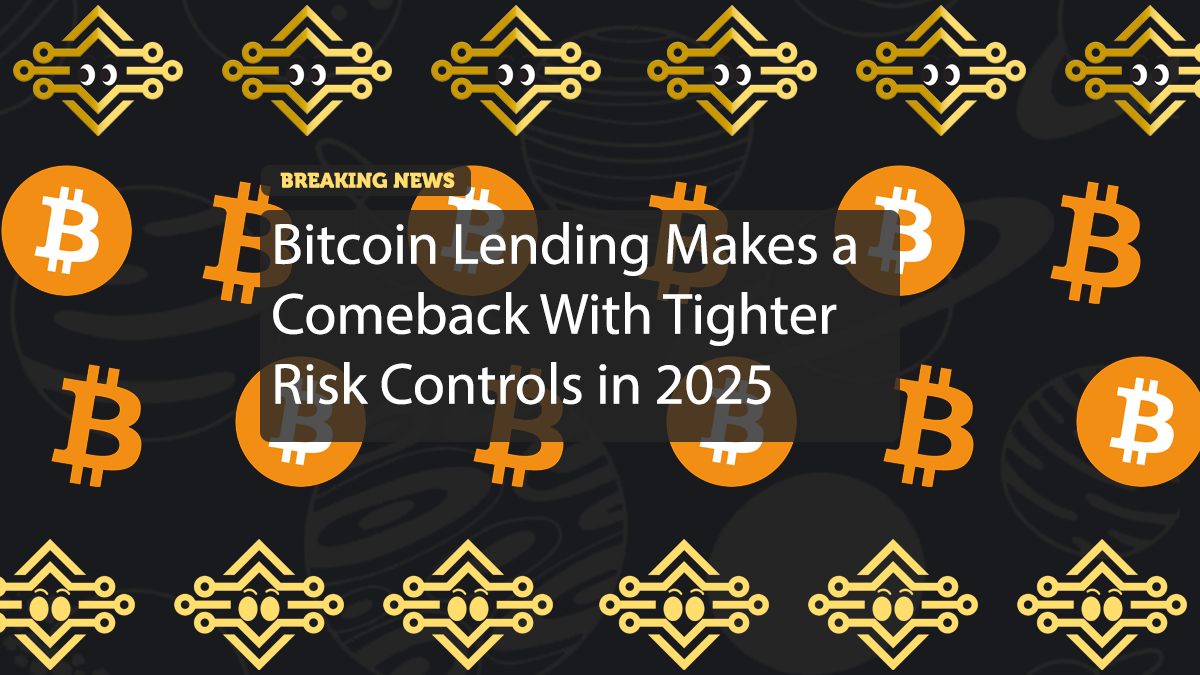
Bitcoin Lending Makes a Comeback With Tighter Risk Controls in 2025
It wasn’t long ago that the words “Bitcoin loan” triggered flashbacks to the crash-and-burn disasters of Celsius, BlockFi, and other high-flying crypto lenders. Billions evaporated as undercollateralized loans and rehypothecation schemes imploded during bear market panic.
But fast forward to 2025—and Bitcoin loans are back. Quietly. Carefully. And, so far, a lot more responsibly.
What’s Changed Since the Collapse?
The biggest issue during the Celsius era wasn’t the concept of crypto-backed loans—it was how recklessly they were managed. Platforms:
- Reused customer collateral (rehypothecation) without clear permission
- Offered high loan-to-value ratios (LTVs)
- Had minimal transparency or auditability
- Took leveraged bets with other people’s funds
When Bitcoin prices fell, platforms couldn’t meet margin calls or customer withdrawals, triggering a cascade of liquidations.
Today’s players? They’re playing it a whole lot smarter.
The New Bitcoin Lending Model in 2025
According to Alice Liu, head of research at CoinMarketCap, this new wave of lending emphasizes transparency and risk controls, including:
- Overcollateralization: Loans now require more BTC locked up than the amount borrowed
- Stricter liquidation thresholds: Platforms are more aggressive about managing risk
- Third-party custody: To reduce counterparty risk
- Clear disclosures: Especially when collateral is reused (if at all)
Institutions and long-term holders—not retail speculators—are driving most of today’s demand. Their focus? Liquidity access, tax efficiency, and asset diversification, not risky yield farming.
Still, There’s a Catch: Bitcoin Is Volatile
Even with lower LTVs and better systems, the core problem hasn’t gone away—Bitcoin’s price can move fast.
In March 2025, it dropped to 77000 during a geopolitical panic. A 10 to 20 percent drop is not uncommon. And for loan platforms, that’s all it takes to trigger mass liquidations—even when the platform’s playbook is conservative.
“Even a sharp 5 percent move can shake a well-run loan book,” says Sam Mudie, CEO of tokenized finance firm Savea.
Rehypothecation: The Elephant Still in the Room
Some platforms still reuse customer assets to enhance yields—but now they disclose it. Others, like Strike, promise never to touch customer BTC.
The verdict is still out on whether rehypothecation can be done safely in crypto. In traditional finance, it’s tightly regulated. In crypto, not so much. Transparency, again, becomes the key differentiator.
Lending Volumes Are Rebounding
Despite the ghosts of Celsius, Bitcoin-backed loans are gaining traction again:
- The crypto lending market bottomed at 6.4 billion dollars after the 2022 crash
- By Q1 2025, it recovered to 13.5 billion in open CeFi loans
- That’s a 9.2 percent quarter-over-quarter growth, according to Galaxy Research
It’s a cautious climb—but a climb nonetheless.
New Use Cases: Real Estate, Taxes, and More
Why are people borrowing against Bitcoin in the first place?
- To avoid capital gains taxes when accessing liquidity
- To buy real-world assets, like property
- To fund operational costs without selling long-term holdings
It’s no longer about leverage and yield chasing. It’s about smart asset management.
That said, not everyone’s convinced. Bitcoin purists argue that mixing BTC with traditional finance introduces risk layers that smart contracts alone can’t manage.
What a Safer Bitcoin Loan Could Look Like
So, what would a truly secure Bitcoin lending system look like?
Here’s what experts suggest:
- Public proof-of-reserves
- Multisig wallets to hold collateral
- Hard limits on reuse of collateral
- Onchain, automated margin calls
- LTV caps around 40 percent, just to be safe
These are ambitious upgrades—but they point the way toward a more resilient lending model.
Final Thoughts
The revival of Bitcoin lending isn’t a return to the high-flying, yield-chasing days of 2021. It’s a slow, cautious rebirth—one with more guardrails, better investor behavior, and smarter designs.
But make no mistake—the risk is still there. As long as volatility remains, even the most “safe” loan model can become fragile fast.
Whether this comeback becomes a new foundation or just another chapter in crypto’s rollercoaster history depends on how long the discipline lasts.
















